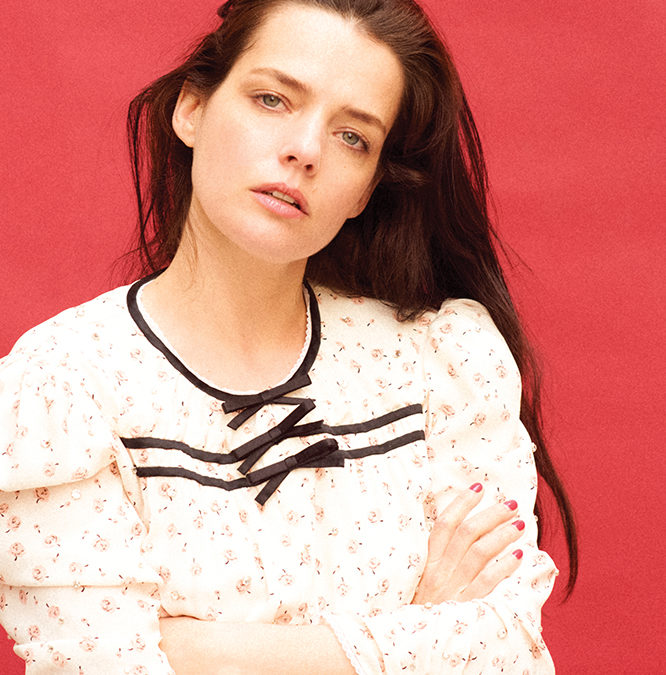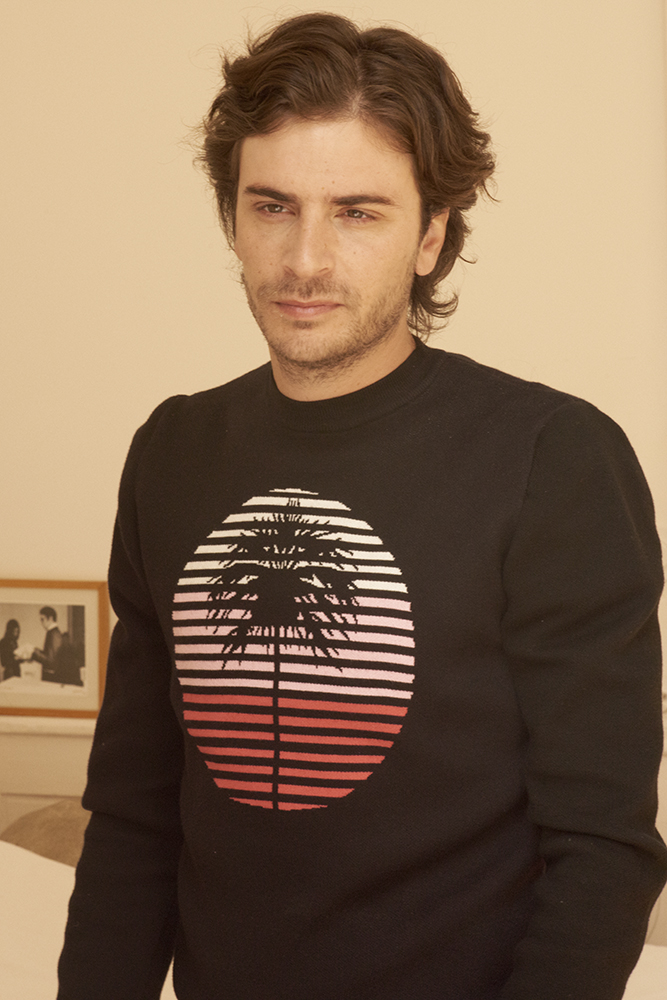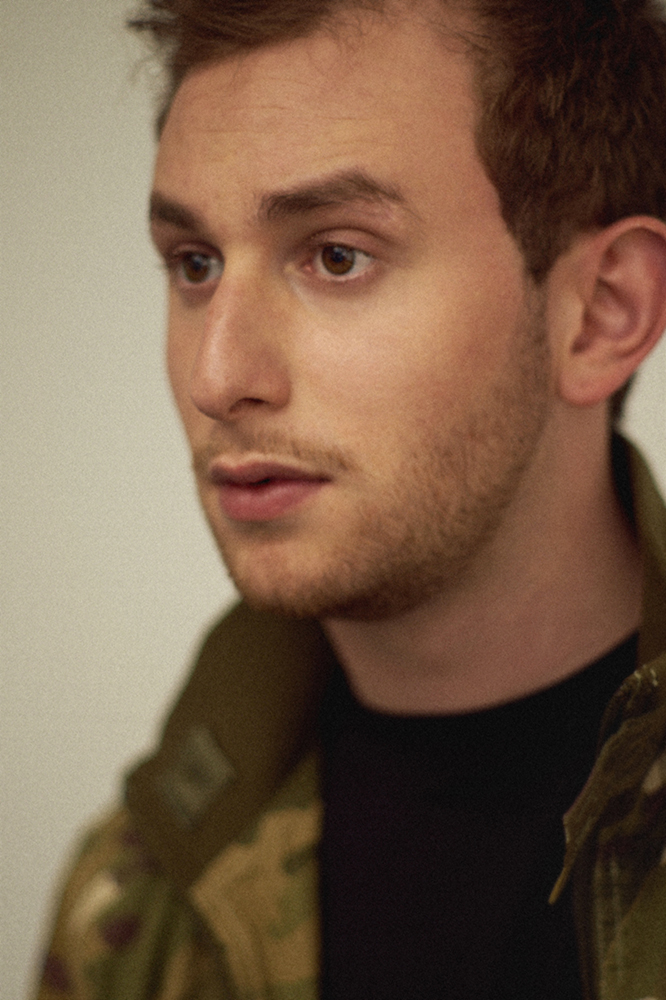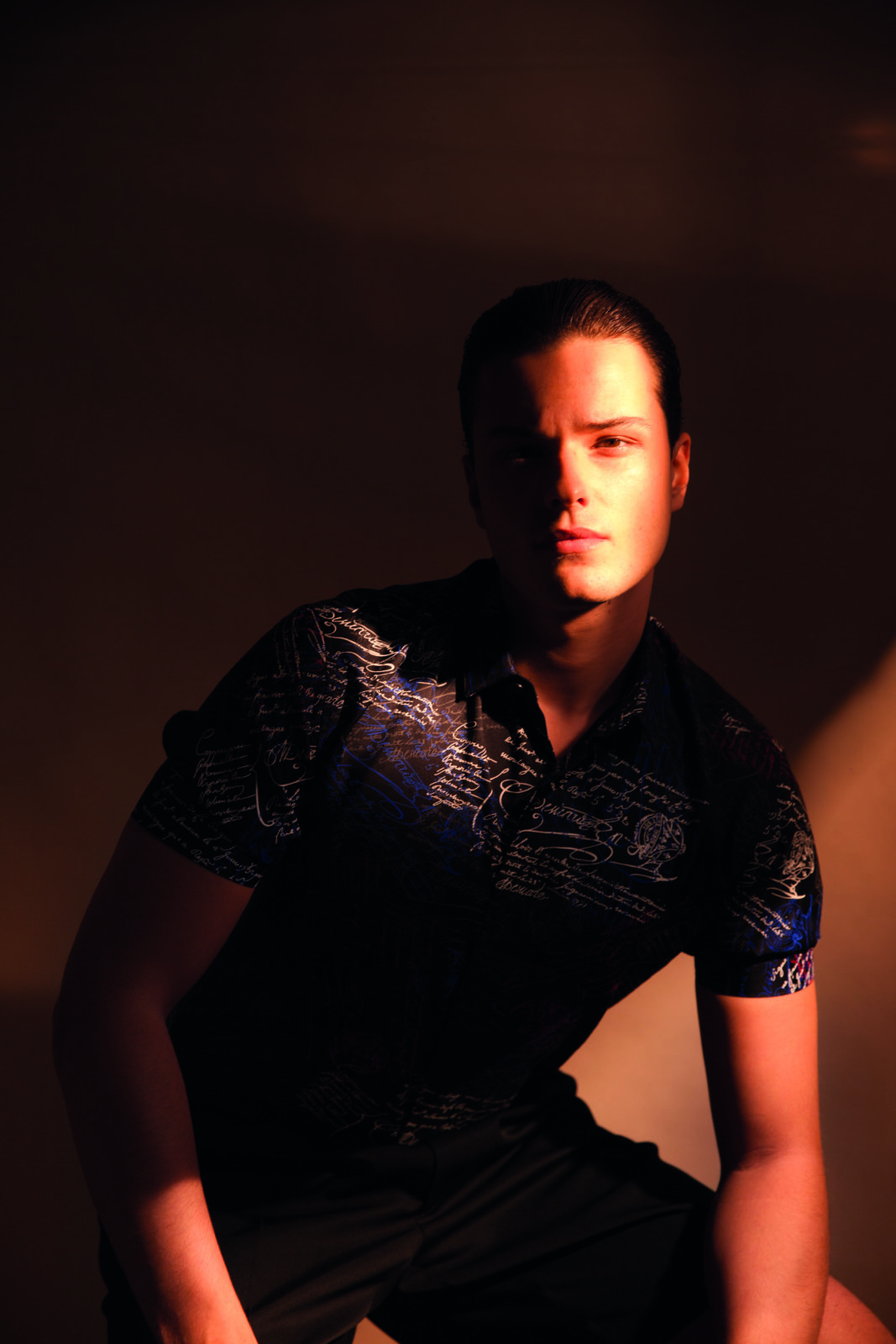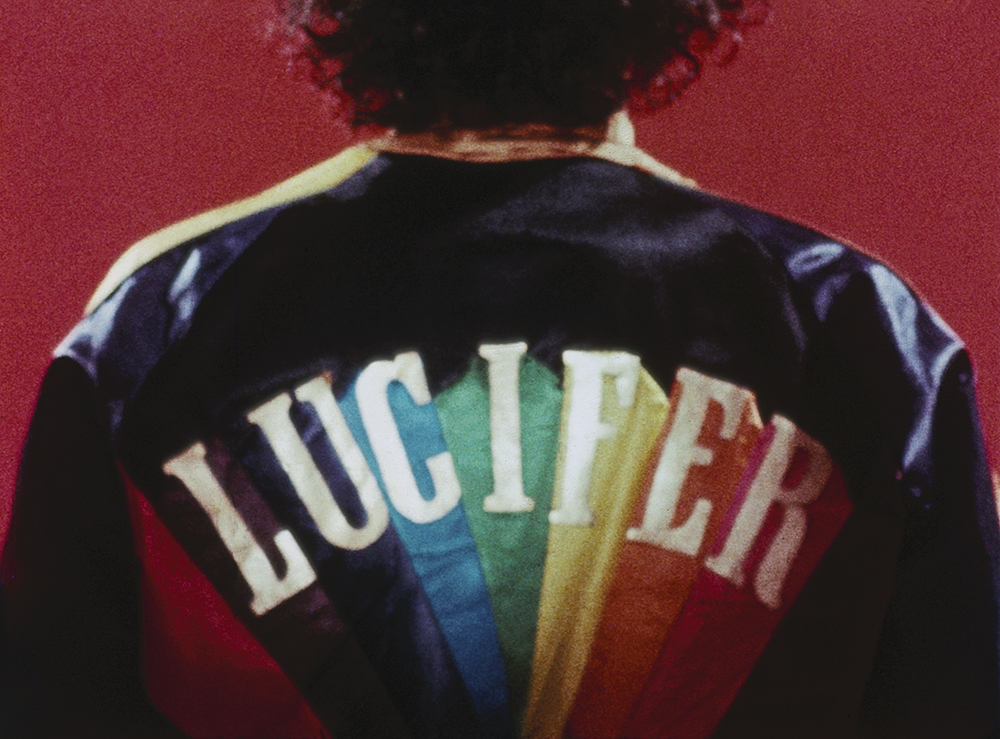
Miu Miu - Silk dress with strass / Audemars Piguet - Royal Oak Automatic
A MEETING WITH ROXANE MESQUIDA
By Alice Butterlin
It’s hard not to associate actress Roxane Mesquida with a wild and exuberant type of underground cinema. Roxane got her start at an early age in France, working with Manuel Pradal and Benoit Jacquot, before becoming the muse of Catherine Breillat, with whom she shot three films in the early 2000s. She also starred in Kim Chapiron’s first directorial effort, Sheitan, before launching her career in the United States. There, she appeared in the work of Gregg Araki and Quentin Dupieux, two icons of contemporary indie film, who paved her way towards more demanding roles in stunning films. Back on screen in Gregg Araki’s highly anticipated series, Now Apocalypse, we caught up with her to talk about her career and life in Los Angeles.
Can you tell me about your background and who introduced you to film?
I was barely thirteen when the director Manuel Pradal discovered me on the street. I grew up in a small town in southern France, and to be honest, being an actress never crossed my mind.
What films or directors have had an impact on your life?
Some of the directors I’ve worked with: Catherine Breillat, Gregg Araki and Philippe Grandrieux. As a cinephile, I have a long list of favorite directors! Béla Tarr, Carlos Reygadas, Ulrich Seidel, Lynne Ramsey, Bruno Dumont… They opened my eyes to an intimate, artistic kind of cinema. They made me fall in love with film.
What was your first experience in film? What impact did it have on your career?
My career started very early (Mary from the Bay of Angels by Manuel Pradal). Then I got offers for parts in auteur films. I had the incredible opportunity to climb the stairs at Cannes when I was just fifteen (for The School of Flesh by Benoit Jacquot). Right away it directed my career towards these types of films, and I’m very grateful for it.
Meeting Catherine Breillat seems to have been a turning point in your life. What does this director represent for you?
I was hardly seventeen when I met Catherine Breillat. I wasn’t very interested in film at the time. Even though I had already appeared in a few films, painting was my true passion. I remember the first time we met: Catherine asked me to learn a text and come back later. I told her I had to go see an exhibition of Fauvism. So I learned the text on a bench at the exhibition.
You seem to make very deliberate choices about the directors you work with. What are your selection criteria when you receive a script?
I’m not really interested in the script at first. I focus instead on the artistic endeavor with the director. I’m a cinephile and I know exactly who I want to work with.
What motivated you to move to Los Angeles?
Gregg Araki asked me to come to Los Angeles to appear in his film Kaboom. I already loved the city and figured it was a good excuse to move there for at least a year. In the end, I never stopped working and now I’ve been living here for ten years.
You didn’t see a future for yourself in French film?
Catherine Breillat is adored in the United States, which unfortunately is not the case in France. Oddly enough, it’s much easier for me to work here. But I love French cinema and acting in my mother tongue. I worked on a French film this winter, Méduse directed by Sophie Levy. It’s a claustrophobic story with Arnaud Valois and Anamaria Vartolomei. It was a pure pleasure to act in France and in that role.
What was it like meeting Gregg Araki? Did you like his films before meeting him?
I was already a fan of his work. I think he’s one of the most interesting American directors working today. We met at a dinner in Los Angeles. He loves the cinema of Breillat and told me he had a role for me in his next film. One year later we were shooting Kaboom.
You also worked frequently with Quentin Dupieux, who has created a distinct creative world through his independent approach. What did you like about his films?
I knew of Quentin’s work as Mr. Oizo. I remembered loving his short with Flat Eric. We met when I was working on Kaboom. He told me about his project Rubber, a film shot in 5D, while assuring me it was a real film. I instantly fell in love with the experimental concept.
Are you drawn to more experimental projects?
More artistic and sometimes very experimental. Not always the best choices for finding a comfortable spot in the French film world. But so rewarding from an artistic standpoint!
Can you talk about your experience in Gossip Girl? Did you like working with Amy Heckerlinget? Were you a fan of her films that influenced a generation of teens in the 80s and 90s?
Absolute fan of Clueless! I was so intimidated about working with her. Gossip Girl was a fun and impressive adventure. It was my first time acting on a big American production. We had a full schedule with seventeen-hour days sometimes. I loved playing the part of the wicked princess of Monaco.
Are there any roles you’ve dreamed of playing but no one has offered you yet? More generally, do you think actresses have a hard time moving on from roles they are known for?
We physically represent something. When I first started acting, people often told me that I didn’t have a face for suffering, and that I couldn’t act in “social” films. It was frustrating, because there were a lot of roles that I wanted to play, or French directors that I wanted to work with. But I can’t complain, because I’ve worked with so many directors whom I admire. I’ve had an unusual career, and I’m proud of it.
What is your daily life in Los Angeles like? How do you spend your free time?
My daughter was born sixteen months ago, and I’ve never worked so much in my life! Two films and a series, all while breastfeeding for fifteen months. As soon as I’m off set, I spend all my time with my daughter. I take her to the park every day, and she follows me everywhere: festivals, film sets… She’s already been on an airplane fifteen times!
You have already sat on the jury of several film festivals. What do you want to see from new directors?
I just want to be blown away by their work. The last time was Thunder Road by James Cummings. He belongs to the new generation of American directors that I love, like Sean Baker, David Robert Mitchel and the Safdie brothers.
What is your fondest memory on set?
There are so many… But I would say my eight-minute sequence shot in Catherine Breillat’s Fat Girl! It was hard, but in that moment I felt I became an actress.
Have you ever seen a performance on set that took your breath away, even if you weren’t in the scene?
It wasn’t really on set, but during the post-synchronization for Kim Chapiron’s Sheitan. I remember that Vincent Cassel had to redo the sound for a fight sequence in the film. In the studio, he practically reenacted the scene by rolling around on the ground. I was fascinated by his commitment even when there was no camera around. A legend.
Can you tell me about the series Now Apocalypse from Gregg Araki? How did the project come about and how did you approach the character?
Now Apocalypse is the new series produced by Steven Soderbergh, written and directed by Gregg Araki and co-written by Karley Sciortino. I play Séverine Bordeaux, one of the four main characters. It’s one of my wackiest projects and I’m so proud of it.
What are your upcoming projects?
Now Apocalypse is coming soon in France. In fact, right now I’m working on recording my French voice. And the French film Méduse directed by Sophie Levy should come out by the end of the year.
Interview by Alice Butterlin.
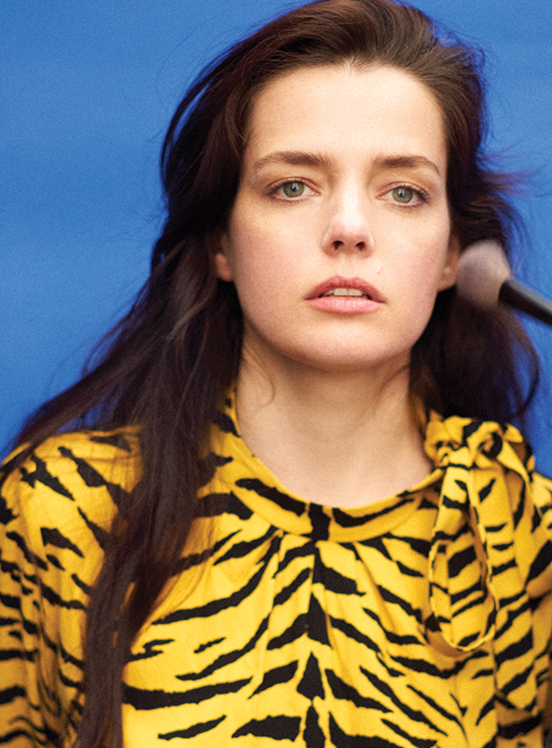
Saint Laurent by Anthony Vaccarello – Wrap dress
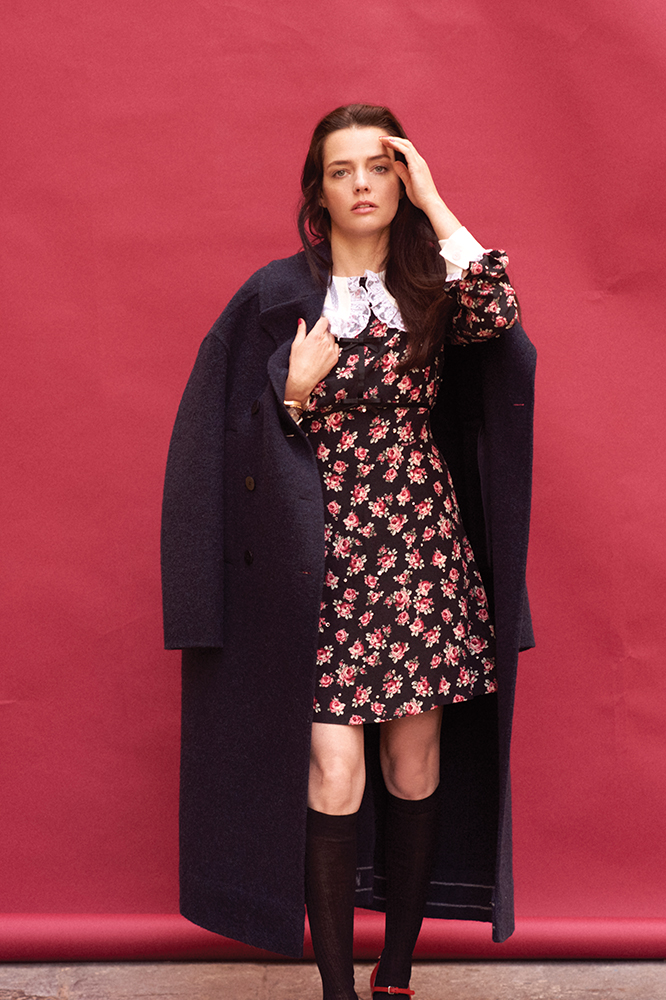
Miu Miu – Silk dress with strass, patent heels, nylon socks
Dior – Wool coat
Audemars Piguet – Royal Oak Automatic
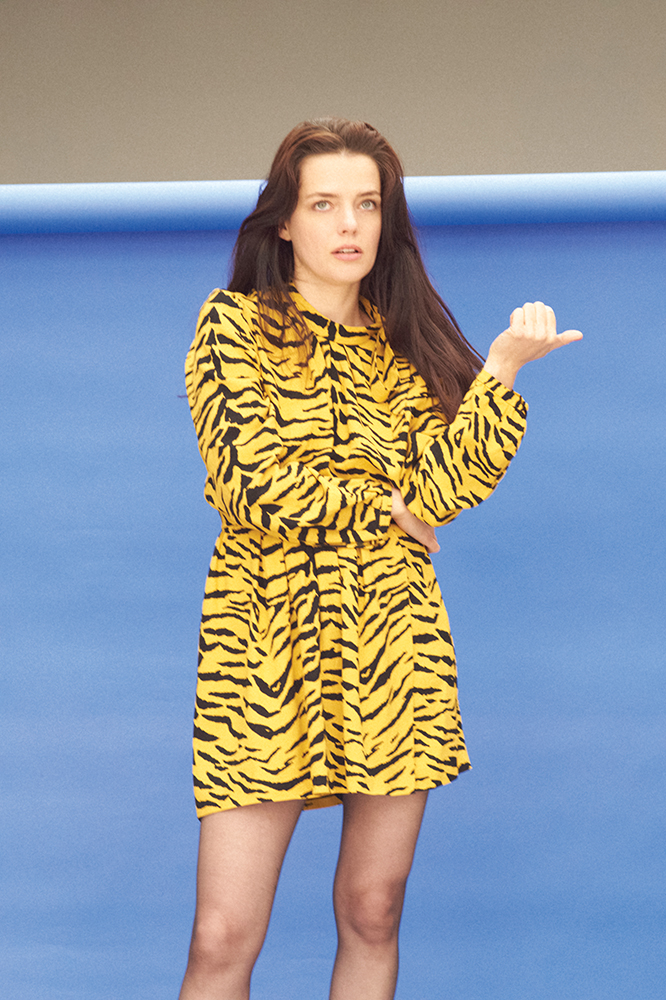
Saint Laurent by Anthony Vaccarello – Wrap dress, cassandre tights with strass
***
Photographer : Bertrand Jeannot
Stylist : Armelle Leturcq
Make up : Jennifer Le Corre @Atomo Management
Hair : Chiao Chenet using Dyson hair @Atomo Management
Stylist assistant : Pauline Grosjean







